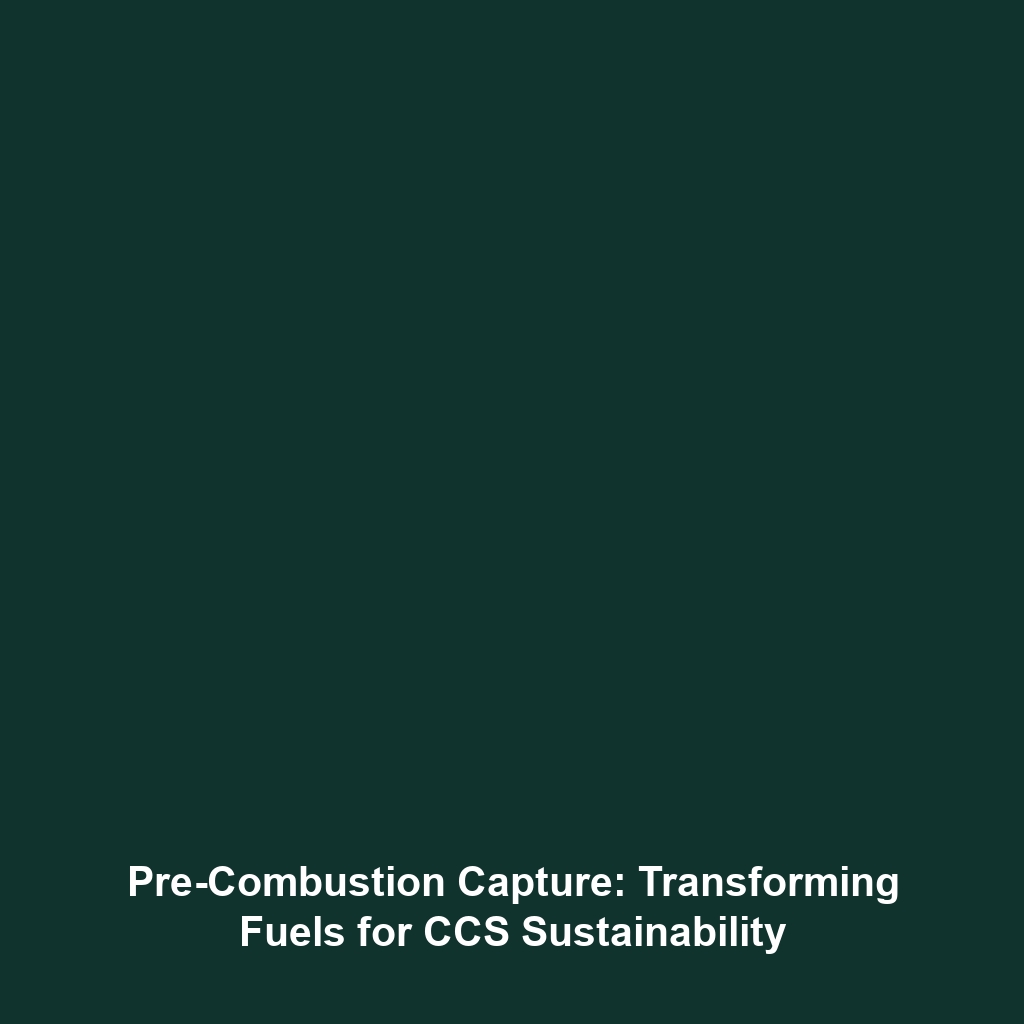Gasification Processes and Integrated Gasification Combined Cycle (IGCC) in Carbon Capture & Storage
Introduction
Gasification processes, coupled with Integrated Gasification Combined Cycle (IGCC) power plants, play a pivotal role in the advancement of Carbon Capture & Storage (CCS) technologies. These methods convert carbon-rich materials into a synthesis gas (syngas), enabling efficient energy production while mitigating carbon emissions. As governments and organizations strive to combat climate change, the significance of IGCC and gasification methods in reducing greenhouse gas emissions increases, making them crucial components of a sustainable energy future.
Key Concepts
Understanding Gasification
Gasification is a thermo-chemical process that converts organic or fossil-based materials into carbon monoxide, hydrogen, and carbon dioxide. The process breaks down feedstocks at high temperatures in a controlled environment, facilitating the energy extraction. By integrating this method within the IGCC framework, plants can deliver higher efficiency and lower emissions compared to conventional coal-fired power generation.
Integrated Gasification Combined Cycle (IGCC)
IGCC systems blend gasification technology with combined cycle power generation. The syngas produced undergoes a combustion process to drive gas turbines, while waste heat generates steam to drive steam turbines. This dual cycle maximizes energy output while minimizing the carbon footprint, making it a significant advancement in Carbon Capture & Storage efforts.
Applications and Real-World Uses
The applications of gasification processes and IGCC power plants extend across various sectors. Here are notable examples:
- Power Generation: Many countries utilize IGCC technology to produce cleaner energy. For instance, the Kemper Project in Mississippi aims to demonstrate the efficacy of CCS alongside IGCC.
- Hydrogen Production: Gasification is a vital method for hydrogen production, contributing to efforts in decarbonizing industries.
- Waste Management: The process is also effective in converting non-recyclable waste into usable energy, reducing landfill impacts.
Current Challenges
Despite its promise, the implementation of gasification methods and IGCC power plants faces several challenges:
- Cost Constraints: The high initial capital investment and operational costs can deter widespread adoption.
- Technical Complexity: The technology requires sophisticated management and expertise, complicating operations.
- Infrastructure Development: Existing power infrastructures may not readily accommodate new gasification-technologies.
Future Research and Innovations
Research continues to explore advancements in gasification processes and IGCC technology, focusing on:
- Improved Efficiency: Innovations aim to enhance the overall energy conversion efficiency of IGCC systems.
- Breakthrough Materials: Development of better catalysts could significantly reduce gasification costs.
- Next-Gen Technologies: Emerging carbon-neutral technologies promise to evolve the current CCS landscape, potentially integrating renewable energy sources.
Conclusion
The integration of gasification processes within Integrated Gasification Combined Cycle (IGCC) power plants represents a transformative approach in the realm of Carbon Capture & Storage (CCS). While challenges persist, the ongoing research and innovation present significant opportunities for the deployment of clean energy technologies. To learn more about related advancements in CCS, explore our articles on Carbon Capture Techniques and Sustainable Energy Solutions.

